I never met the man, but Floyd Zaiger made my yard taste better. I grow some of his apriums, like Cot-N-Candy.
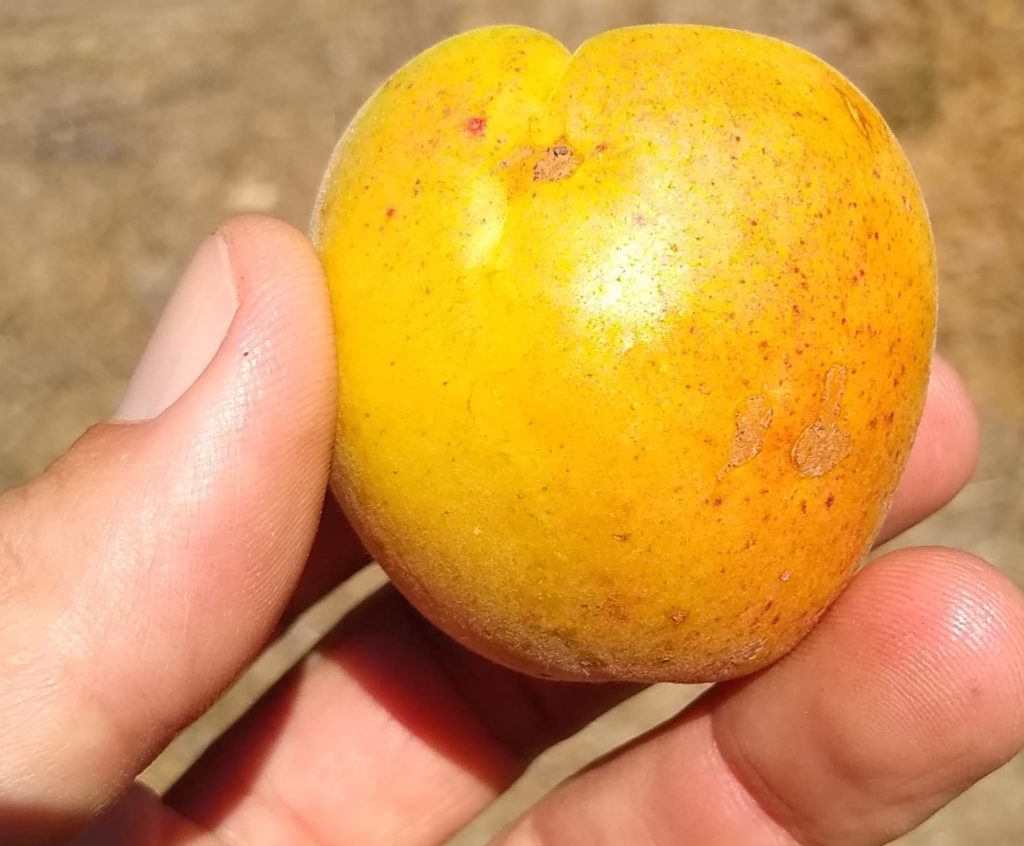
I’ve got a tree of his nectaplum, SpiceZee.

I’ve got his cherry for warm-winter places like Southern California, called Royal Crimson. I’ve got some of his Pride peaches, such as the reliable Mid-Pride. And I grow pluots. My daughter is eating a few Dapply Dandys at the top of the page, but my own all around favorite is Zaiger’s Flavor King.
To me, Floyd Zaiger was the Flavor King. He mixed and matched apricots and plums, nectarines and plums, plums and apricots, in order to reach new heights of eating pleasure: texture on top of taste on top of all varieties that came before.
He called his company Zaiger Genetics, but all he was doing was taking the pollen from one flower and touching it to the pistil of another. This is something a bee could have done. This was not genetic modification or genetic engineering. This was traditional plant breeding. Watch the process at Zaigers explained in this video:
Floyd Zaiger passed away earlier this month, on June 2. He was 94 years old. He leaves his company in the hands of children and grandchildren who have been working beside him for decades. We’re sure to continue seeing new varieties of stone fruit arrive from the Zaigers through Dave Wilson Nursery, their exclusive wholesale grower in California.
I fell in love with Zaiger’s pluots more than any of his other inventions, save perhaps the Bella Gold peacotum (peach, apricot, plum).
Zaiger’s pluots are the pinnacle of stone fruit. The have better crunch than most plums, they resist pests and diseases better than peaches and nectarines, some pluot varieties have a month-long harvest season, and they take the heat better than apricots. They also produce massively if you match the variety to your yard’s climate.
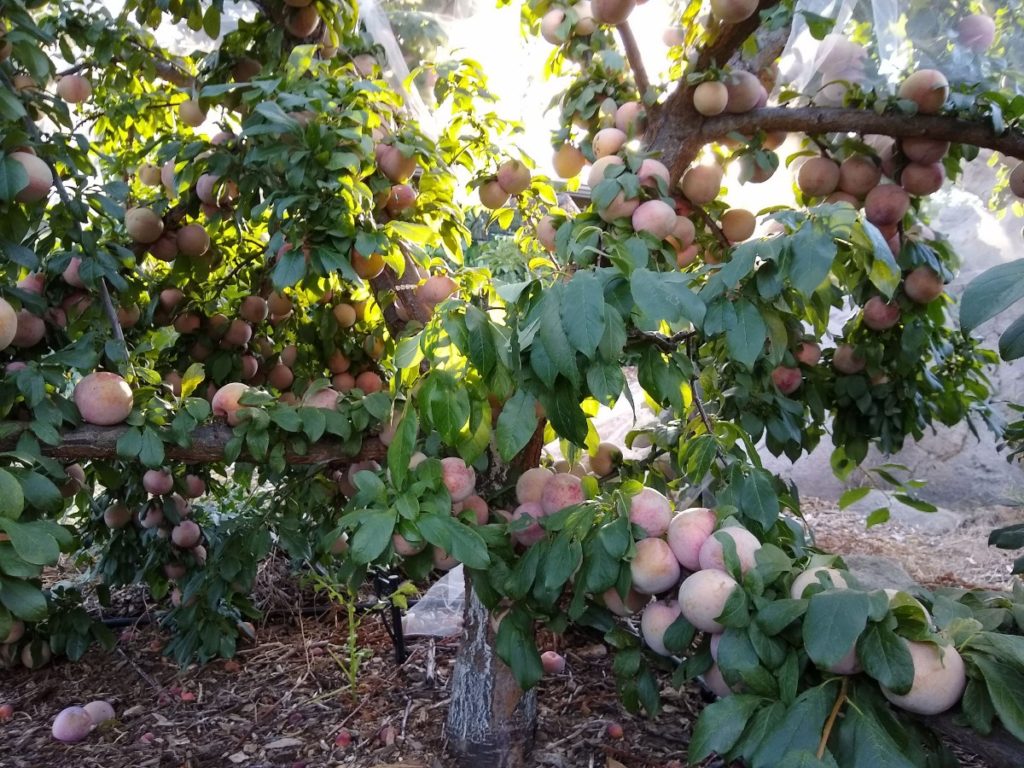
Pluots deserved a book written about them. Chip Brantley wrote it, and titled it, “The Perfect Fruit.”

Floyd Zaiger ended up in California’s Central Valley after having been born in Nebraska in 1926. He served in the Army during World War II before earning a degree in plant pathology from the University of California at Davis. After Davis, Zaiger and his wife Betty earned their living by breeding and selling azaleas and rhododendrons before making a committed switch to fruit.
Zaiger had previously worked for Fred Anderson, who became well known for his contributions of new nectarines. And Anderson had previously worked for Luther Burbank, a breeder of many types of plants including crosses of plums and apricots.
But Floyd Zaiger would go on to greatly improve the potential of plum-apricot crossings by backcrossing with plums to create what he called pluots. (A 50/50 hybrid of plum and apricot is usually referred to as a plumcot.) A pluot is a piece of fruit with more plum than apricot in its pedigree.
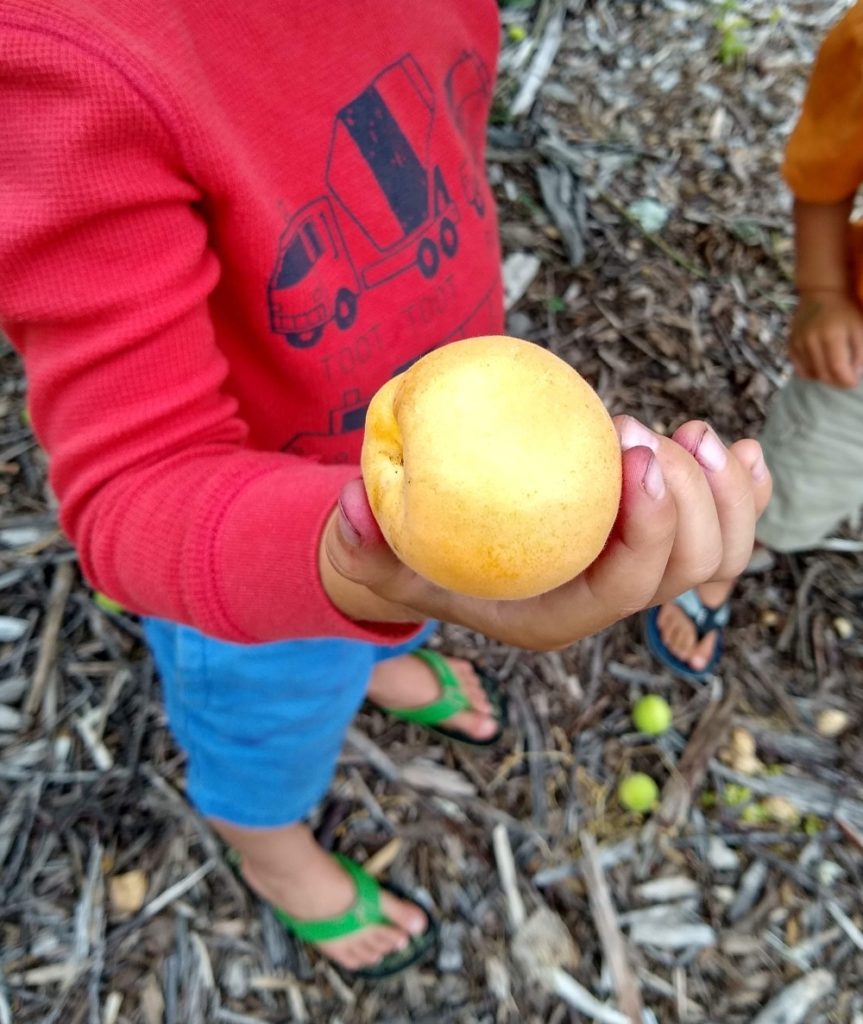
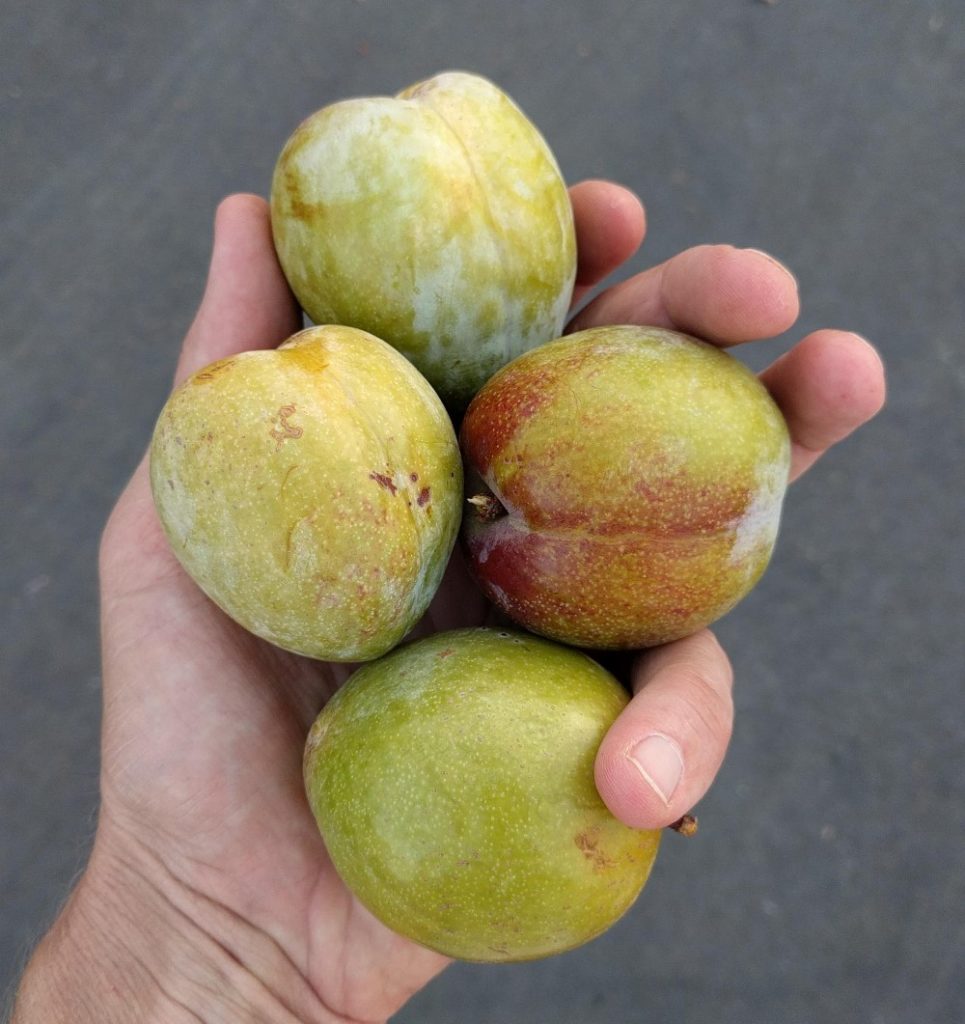
Let me return to the pluot that Zaiger named Flavor King. My grandma was visiting last summer when the Flavor King pluots on my tree were in season. My kids were hanging out by the tree much of the day and sharing fruit with their great grandmother. Then when it was time for her to drive home I noticed that she strolled back down to the Flavor King tree on her own to pick a few for the road.
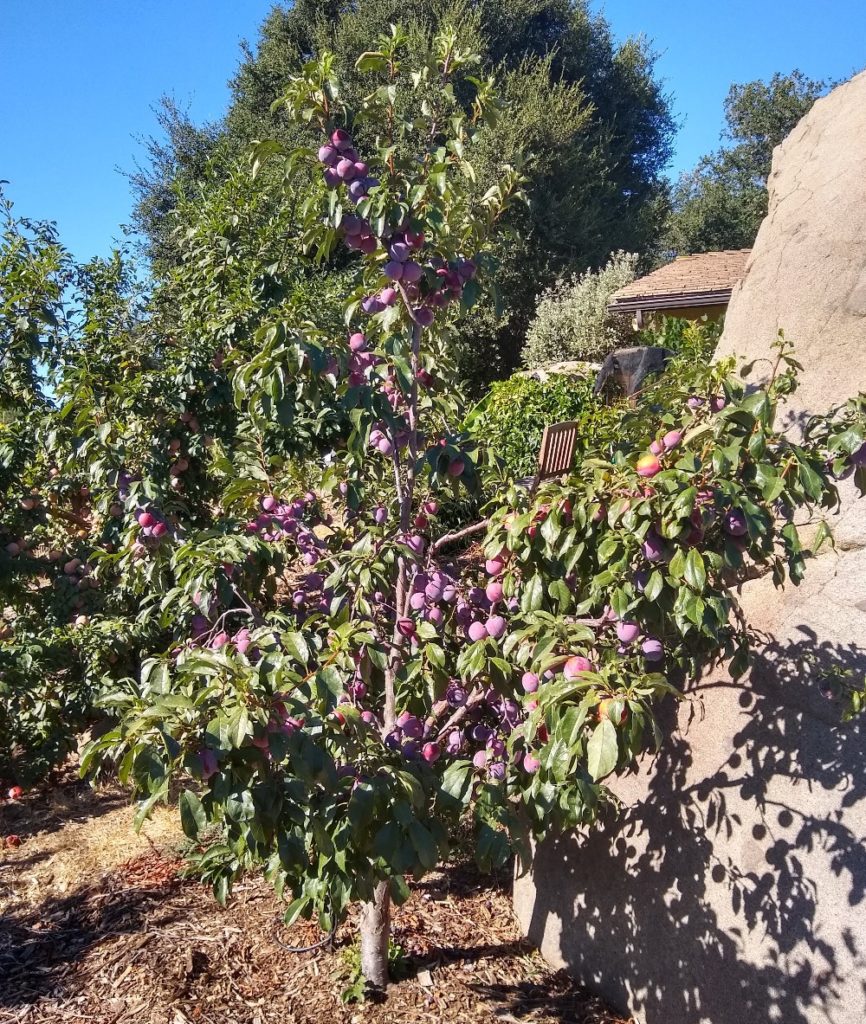

A couple months later my grandma asked if I could help her plant a Flavor King pluot tree in her yard. Grandma has dozens of fruit trees; guavas to tangerines to pears to loquats to avocados to apples to plums; she’s been growing fruit trees for longer than I’ve been alive; yet she needed to add a Flavor King pluot. Thank you, Floyd Zaiger.
More about Floyd Zaiger
Obituary in Zaiger’s local paper, the Modesto Bee, by John Holland.
List of some fruit varieties that Floyd Zaiger created.
Video of a Wednesday “Cream of the Crop” tour and tasting at Zaigers.
Here is my post about “Growing pluots in Southern California.”
Thanks to you, the readers and Supporters of this website! You keep me writing and keep The Yard Posts ad-free.
Learn how you can support HERE
A list with links to all of my Yard Posts is HERE




Love this post Greg! I am excited to plant some stone fruit especially pluots next January.
Thank you Greg for this interesting information. I am from Nepal , last few years engaged in fruit cultivation. The Flavor King pluots on your tree, looks much tempting. I am planning to be in North Carolina sometime in October/November or may be in California. In fact if I come to California what about spending few hours learning different aspect of fruit cultivation, possibilities, problems and learning different solutions, Is there anyway I can carry its seed and germinate in Nepal? Because the quarantine law of my country may not allow me to bring its sapling from there. Your valuable advice please.
Thank you.
Beautiful tribute. Now I’m thinking I want a Zaiger pluot tree!
I put in a Spice Zee last fall. How do you know when the fruit is ready to pick? Mine seem hard as rocks, but are colored up like the ones in your picture. I’m about a mile from the coast, so not as hot here as where you are. I’d really like to know what to look for. Does the fruit soften like a peach? Something else? Help, please.
Hi Barbara,
Yes, the SpiceZee fruit will soften like a peach or nectarine. Feel for that slight give. It doesn’t significantly change color. In my yard, they are ready in mid to late July and last into the first week of August.
Thanks Greg! That’s very reassuring. Can’t wait to taste the first one. I won’t be adorable like your kiddoes, but I’ll enjoy it just as much, I’m sure.
We’ve started picking them already (just the ones that give a little like Greg said). I live near SDSU and have found them to be a little earlier this year than in years past. Spice Zee is an outstanding fruit that I understand has white nectarine in it’s lineage.
I agree. What a beautiful tribute. It certainly makes me want a Flavor King Pluot tree as well. On another note, I have a question about avocados. I read a comment recently where someone said the bumpier the skin on an avocado means it’s higher in fat. Is there any truth to that? After thinking about it, I thought, maybe so, but it can’t be by much so why even bother mentioning it? LOL
Hi Debbie,
Thanks. I don’t think there’s any consistent correlation there. There are bumpy skinned avocados that accumulate a lot of oil, and there are smooth skinned avocados that accumulate a lot of oil. I don’t have the numbers for many varieties, but just in terms of taste, this is how it seems to me.
Bumpy skinned avocados with high oil include Hass and Gwen. Smooth skinned avocados that attain high oil include Puebla, Stewart, and Sir-Prize.
Then there are some varieties in the middle, with slightly bumpy skin, that reach high levels of oil such as Sharwil, GEM, Nabal, and Lamb.
Hi Greg..i have a couple of blueberry bushes and gardenia that I am keeping in small pots. I think they have outgrown the pots. What part of the year would be good to up-pot them? I’ve heard always good to do it when they are dormant. When would blueberry and gardenia go into dormancy in San Diego?
Hi James,
I don’t know anything about gardenias, but I do know a bit about blueberries. Most blueberries don’t go fully dormant in San Diego; that is, they don’t lose all of their leaves. But that doesn’t matter. I’d repot a blueberry bush any time. They’re surprisingly tough and resilient as long as they’re sufficiently watered.
We’ve got nine varieties of pluot here. My wife loves them which is why I planted them. Two trees are 4-1 and there’s a stand alone Flavor Finale tree. I had to order the Flavor king, queen, supreme, dapple dandy as it’s a higher chill and I couldn’t find it in town. Great article about Zaiger.
Hi Bob,
Thanks. What’s the fruitset like on your pluots this year? Mine is moderate whereas last year it was high.
Most of our pluot trees are young so I’ve never really had a bumper crop. I do notice more this year than last, though, probably because the trees are a little bigger. One of my 4-1 trees had a runt branch (the flavor grenade) that I’ve been letting catch up over several years by heavily pruning the other varieties back, which has stifled production overall on that tree. Our Flavor Finale is a small tree but seems to have quite a few pluots. Strangely, our fairtime peach, which hasn’t given me a single peach in 5 plus years, has a huge crop and I had to really thin it this year.
Please tell me how the Fairtime turns out. I’d love to add a late peach like that someday.
Has anyone else noticed the timing of ripe fruit has been a little off the last few years? I’ve had a lot of my mid season varieties come in early and a lot of my early season varieties come in late (and bland to boot). I think the early warmth in winter got things to bloom and then the cool springs kept the early stuff from ripening like it should have. Just wondering if I’m the only one seeing this.
Hi Bob,
I can’t say I’ve noticed exactly that. The order of harvest of different varieties in my yard has been almost consistent although the durations have varied. For example, last summer’s pluots lasted longer than usual, all the way into October. And this year’s raspberries are still putting out top quality berries in their first round, I think because we haven’t had a real heat wave yet. Usually they take a break about now and start again in late summer or fall.
That’s super interesting that midpride is a reliable producer. I wonder what’s wrong with mine! The desert gold next to it made a bazillion fruits and grows like crazy, but the midpride isn’t even fully leafed out. It doesn’t have any visible curl, but the gophers did go crazy in my yard this year (though I don’t think it produced last year either… I excused that as it just being too young). It just doesn’t seem happy.
Hi Jessica,
Bummer about your Mid-Pride. It could be due to so many things: rootstock, soil in that spot, gophers, weather. Mid-Pride seems happy in many different spots in Southern California though. I’ve seen them happy near the beach and when I had a graft on a tree it fruited well at my inland location.
You’ve got a winner of a Desert Gold though so who cares?!
Thank you! The midpride is on citation rootstock. I’m not sure what the desert gold is on. It was a small sad looking tree tube that just said “Cooke potted desert gold”, but as soon as it was in the ground, it went crazy. I have to thin it a TON to the point that it’s annoying. I’m thinking I’ll give the midpride one more full season after this and then swap it out, because it would be amazing to have both early and late peaches or nectarines– desert gold is done for the year as of a week or two ago. I’ll be sure to read your other posts for variety recommendations!
Coming to this post well after you wrote it (I think I discovered you later!) but what an education on Floyd Zaiger and his impact on some very delicious fruit varieties!